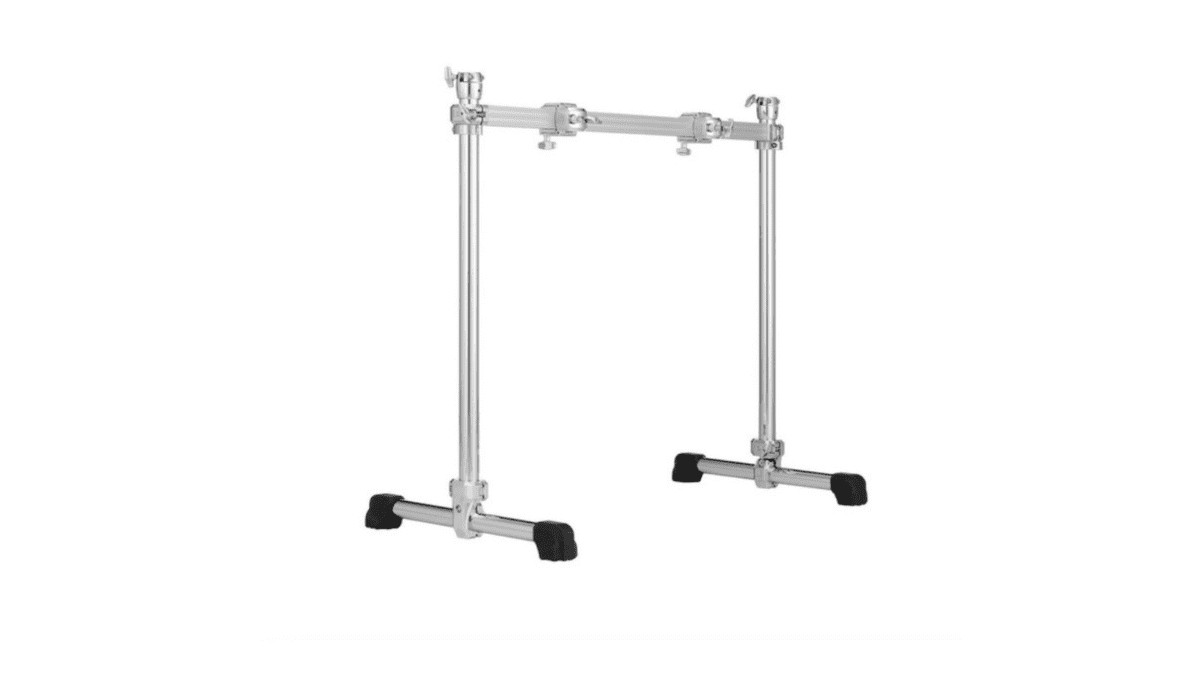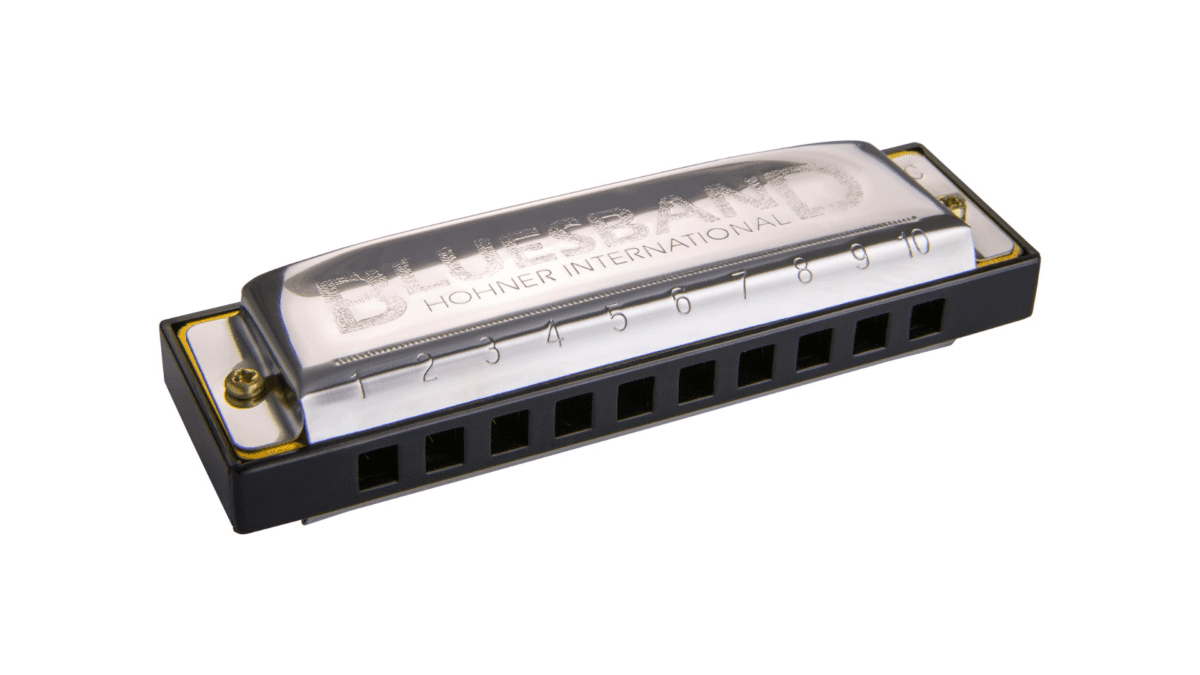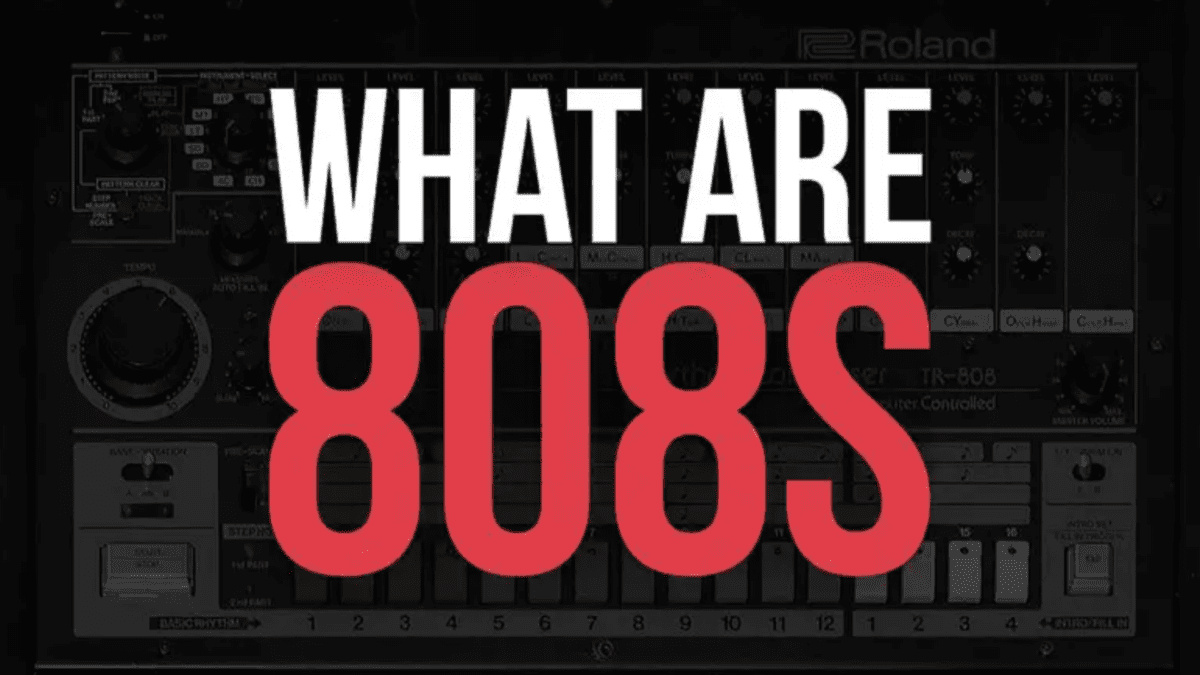In this article, you will gain an understanding of what guitar chords and barre chords are as well as how they are built. I will talk about the fretboard and frets, as well as how fingers are held in position whilst moving from fret to fret. Want to know about the two types of Power Chords? The first type serves as the very basis of Pop, Rock, and every other genre of Western music, and the 2nd involves turning the amp all the way up to 10!
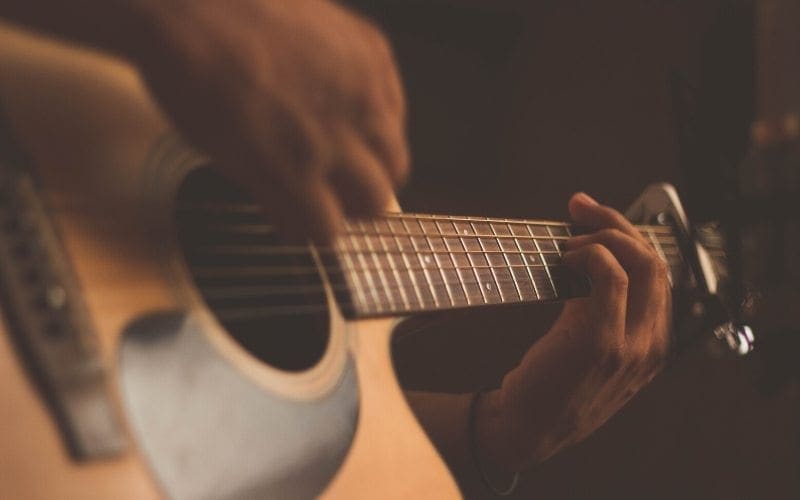
Lastly, read on to hear about different chords across various genres, like blues chords, jazz chords, rock chords, and chords that are common in folk music, plus chord progressions. If you need to brush up or even learn some music theory first, make sure to check out our guide to the music theory behind chords.
Understanding Guitar Chords Basics
Initially, you don’t need to know music theory in order to play chords on the guitar. However eventually, knowing music theory basics will enhance your understanding of how guitar chords and chord progressions work. Playing guitar chords also requires knowing how to tune a guitar, which I will cover later.
Playing guitar chords means different configurations and positions of your fingers. The word ‘position’ can be confusing in relation to playing guitar chords, as it can have two meanings. ‘Position’ can relate to the pattern you make when you hold the fingers of the hand when pressing down on the strings. ‘Position’ can also mean where you position your fingers (your hand) up and down the fretboard. There is even another definition, which comes from music theory, involving root, 1st, 2nd and 3rd positions of any given chord.
Different chords can be created without changing finger positions simply by holding the fingers in a certain position and moving the hand itself. For instance, the fingers don’t move, but the position of the fingers can move up and down the fretboard. The hand moves but the fingers stay the same. This will make greater sense once you start playing Barre Chords.
Both hands are used to play. Usually, the left hand determines what notes and chords to play. The right hand produces the sound of a guitar, either by strumming or picking. With regards to picking, check out our article to find out more about arpeggios.
Guitar Tuning
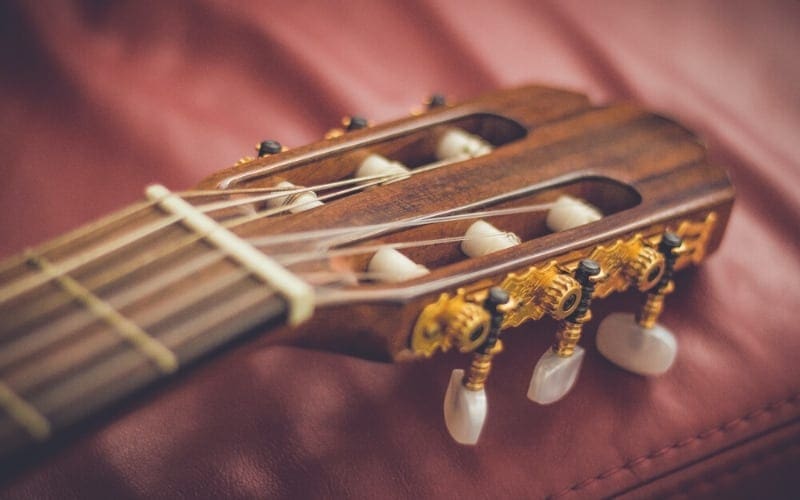
For now, I will keep it as simple as possible. By turning the corresponding knobs at the end of the neck, you can tune the strings. There is one knob for each string, so there are 6 knobs for 6 strings. Each of the 6 strings on a guitar plays a different note, with each string having a different thickness. The thickest string (the string on top) is the low E string. Next is the A string, then D string, B string, and the thinnest string (string on the bottom) is the high E string. From thickest to thinnest, the strings are low E (or bass string), A, D, G, B and high E, this is vital in understanding guitar chords.
There are two methods in open string tuning. The first method uses a guitar tuner, which allows mobility where you can tune the guitar on the go. There are also apps – I would recommend the Fender Guitar Tuning app. The second method uses the guitar itself, which I won’t go too in-depth on. I’m sure you’ll come to use this method once you’re a bit further down the line!
With a tuner or app, all you have to do is turn the tuning knobs to match the sound of each string with the corresponding note on the tuner. Strings break or get old, and eventually need to be replaced. I would recommend always carrying a pack of new strings wherever you go.
Read more and watch a video tutorial in our guide on how to tune a guitar for beginners. Or, visit our online guitar tuner page.
The Fretboard, Frets and Guitar Chord Positions
Let’s put our Guitar Chord Basics to work.
The Electric Guitar Chords Fretboard
The body of the guitar is where you strum and pick with the right hand (the section of the guitar where the hole is). You play notes and chords on the neck of the guitar, which extends out from the body of the guitar. The fretboard is the front side of the neck.
Frets
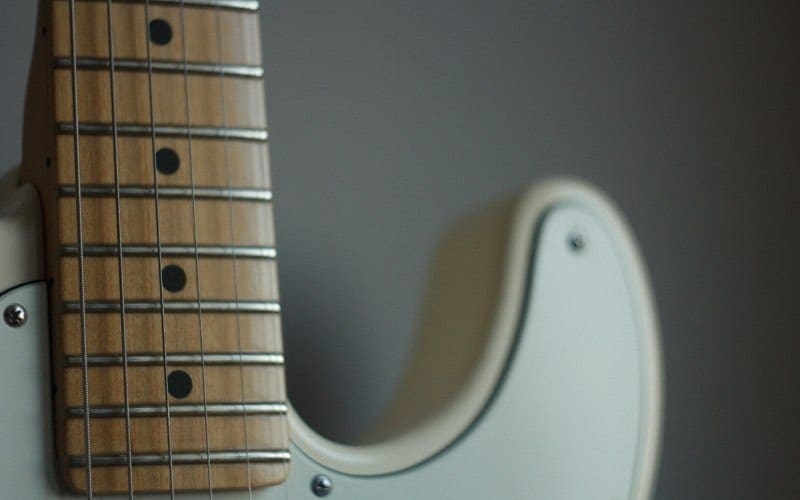
The fretboard is divided up into frets, and a thin and smoothly beveled metal bar separates each of the frets. These are designed so fingers can move across them smoothly.
The number of frets varies depending on whether the guitar is acoustic or electric. The traditional classical guitar (nylon strings) has 19 frets. A steel-string acoustic guitar has the same as a classical nylon string – but this can vary. Chords electric guitar have from 21 to 24 frets (and some custom guitars are made with more than 24 frets, up to around 27 frets).
Again, as you learned in tuning, each fret represents a 1/2 step of the chromatic scale. This means that the fretboard is a representation of the Chromatic scale. The first fret starts at the nut of the fretboard. The nut separates the fretboard from the tuning knobs. Both numbers and note names are used to determine frets, such as 1st fret, 2nd fret, 3rd fret, etc.
Guitar Chords In Relation To Frets And The Fretboard
Playing chords (and notes) on the right side of the fret is critical to how chords will sound. It takes precision in the placement of the fingers as you move from chord to chord. This holds, particularly for Barre chords, where the first finger of the left-hand presses and holds down more than one string, precisely to the right of the metal bar of each fret, this is very important in understanding guitar chords.
Marker Dots On The Fretboard
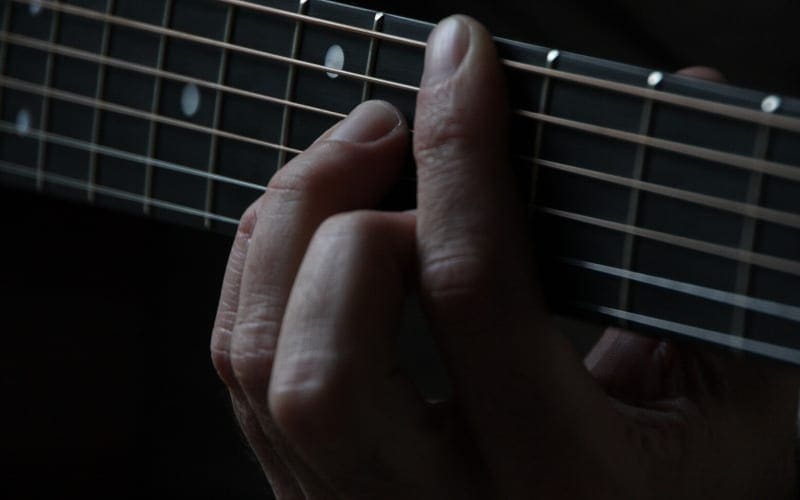
The white dots seen on the fretboard are known as marker dots. Found at frets 3, 5, 7, 9, and 12, they help guide where to play a chord on the fretboard. A double dot indicates an octave. The number of dots depends on the number of frets.
In navigating the guitar, the string plus a fret determines the position of where you need to be in playing chords and notes. For instance, if you want to play a low A note, you would say ‘1st string, 5th fret’ or, ‘2nd string, open’. This will play the lowest A anyone can play on a guitar.
What Happens To Guitar Chords As They Move Up And Down The Fretboard?
Just like a piano, where lower notes are played by the left hand, the lower notes on a guitar are played on the left side of the fretboard with the notes getting higher on the right.
It is easy to confuse left and right with up and down or furthest/closest. The further away your hand is from the body of the guitar, the lower the notes.
How To Understand Guitar Chords
The easiest guitar chords to learn on guitar are E and A Major. Popular chords found in most genres of music (including Pop and Rock ) are the E and A chords. Most minor chords are also relatively easy to learn. The easiest way to play E/A Major/Minor Chords is with open strings.
Let’s start with E Chord Major. The first finger presses down and plays the 2nd string, on the 1st fret. The low E string is played open, so there is no finger placement needed here. Next, the 2nd string is played with the 2nd finger in the 1st fret. The 3rd finger plays the 4th string, 2nd fret. The 5th and 6th strings are played open, this is vital in understanding guitar chords.
‘Played open’ means ‘strummed open’, i.e. the E Major Chord is played by strumming the guitar, starting with a down stroke followed by an up stroke. You can strum the guitar using a pick, or the 1st finger on the right hand as a substitute.
Barre Chords

The shapes of Barre Chords can take some getting used to. You are pressing the 1st finger down across all 6 strings at the same time, which can be difficult at first!
The Barre chord can get tricky since barring all 6 strings does not necessarily mean that all 6 strings will sound a note. A very popular type of chord, there are many guitar songs with Barre chords to practice with! See below for a Barre chord chart.
Power Chords
Power Chords are generated by playing the 1st and 5th plus the 1st and 4th notes of the 8th note scale. In a chord progression, the 1st, 4th, and 5th notes of a major scale form the basis of Western tonal music.
Eventually, you will learn an I, IV, V progression means playing chords in the 1st, 4th, and 5th positions of the Major scale.
Thanks to Pete Townsend of the classic rock band The Who, Power Chords take on a whole new meaning. When the arm wails a full circle in the air in time with the rhythm and the pick strikes the strings of the guitar with the sound so loud, it is like a bomb going off. Maybe a little dramatic… but it is pretty cool. They are essentially played in performances for the sake of drama.
These chords won’t make much sense until you’re ready to understand Guitar Chords Progressions. Power guitar chords largely pertain to how the I, IV, and V chords are played in the context of the Rock and Blues genres.
Blues Chords
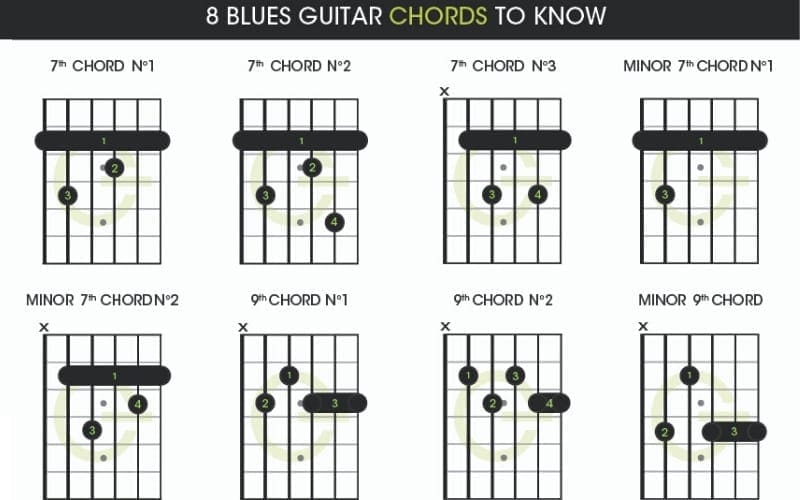
The primary harmonic structure of the Blues is the I-IV-V progression, which derived from Southern church music. Unlike most tonal music, which uses dominant 7th chords (1–3–5–b7) as functional harmony, the blues use them to add color, most commonly in a 12-bar form.
One example of a common Guitar Blues chord sequence is the I-IV-V progression. Built on the first, fourth, and fifth notes of the Major scale, these can be alternated and played with. You can also use 6ths, 9ths, and dominant 7ths for an authentic Blues feel.
Rock Chords

Whilst Jazz music usually revolves around two basic chord progressions, Rock music tends to allow for greater variation. Some commonly used Rock chord progressions are I – vi – IV – V, or I – V – vi – iii – IV – I – IV – V. There are heaps more examples, which can be heard in many songs. Starting out with similar progressions to country, Rock writers have branched out and are always innovating to stand out in the crowd.
Jazz Chords
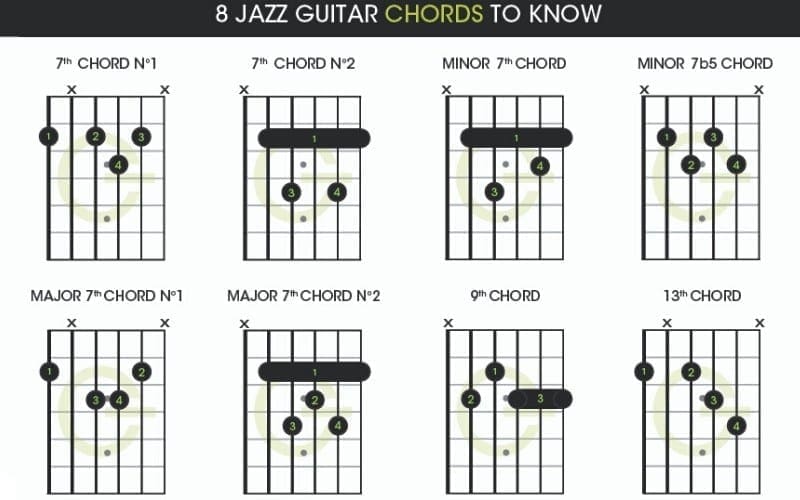
Arguably the most popular chord progression used in Jazz music is II – V – I. A nice variation on this is to add a 7th to change the V chord to V7, which gives it a nice jazzy twist. Jazz guitarists may play chords slightly ahead of the beat, by playing the chord a swung eighth note before the chord changes. Chords are not generally played in a repetitive rhythmic fashion in Jazz – unlike how a rock rhythm guitarist would play.
Chord Diagrams Vs Tabs Vs Charts
Chord Diagrams are often mistakenly called ‘Tabs’.
Tab is short for Tablature. A kind of music notation that are unique to a guitar, tabs involve showing finger positions and frets using numbers, and is laid out in a pattern that mimics the strings of a guitar. See the example below:
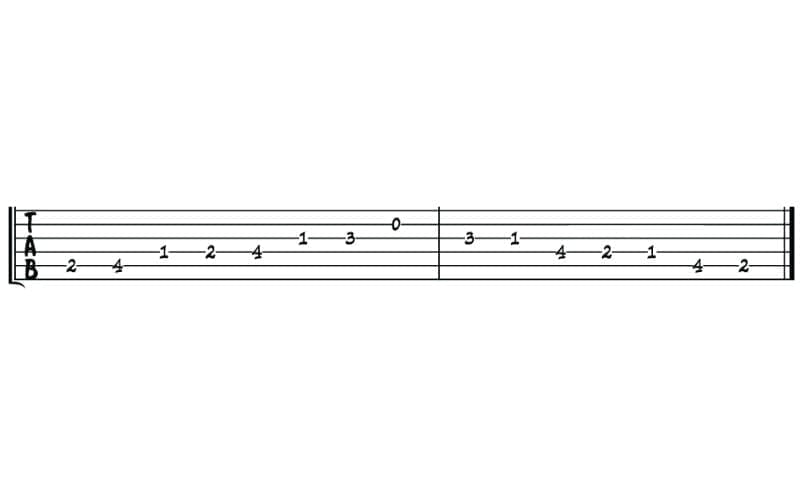
Piano or Vocal sheet music is where you would find guitar chord diagrams (positioned above the treble clef). The diagrams change in accordance to the chord progression of the song.
In theory, a C Major chord contains the same notes on a guitar as it does on a piano. Obviously, different instruments produce different sounds, yet the notes G, E, and C chord remain the same. Guitar Chord diagram showing where to place the fingers on the fretboard.
Summary Of Understanding Guitar Chords
I hope that you found this article useful and you can now understand guitar chords! Bear in mind that the points above are barely skimming the surface of the wonderful and intricate worlds of guitar and guitar chords. Even knowing a few at the beginning of your guitar playing will allow you to use guitar chords for songs – whether writing yourself or playing some of your favorites. Simply look up guitar chord charts online to help you get practicing.
Practicing progressions and backing up your choices with an understanding of theory will allow for amazing jams, and give you more confidence when playing. Hopefully these basic steps and tips will help you on your way to understanding guitar chords and you will be rocking out in no time! If you want to take a different approach to learning guitar, check out our article on Yousician and their online teaching! Or, for further information, take a look at our article on chord inversions, learn about fretless bass or check out the best helix patches and presets!






